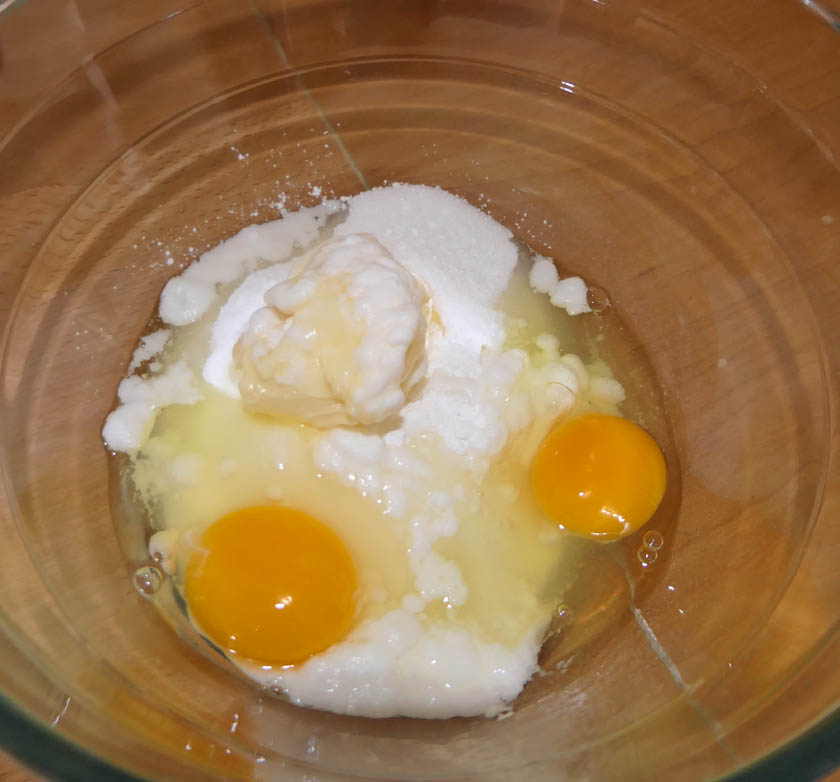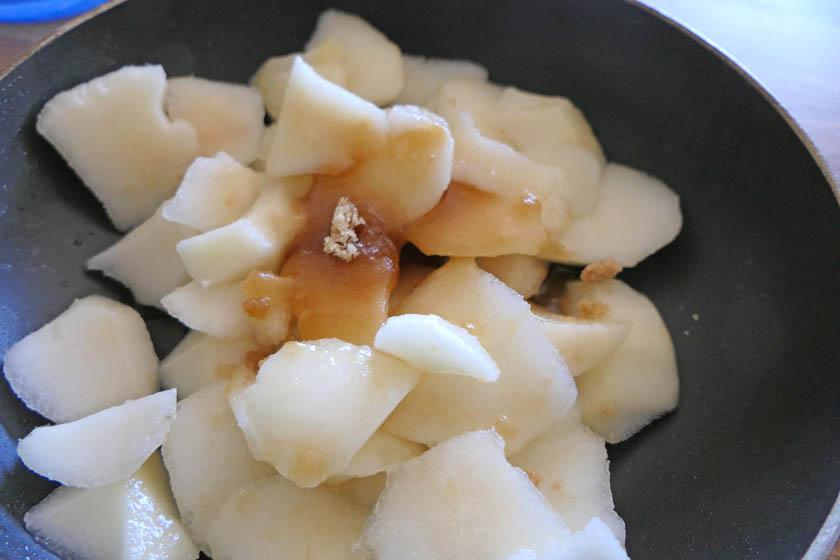I got up this morning and fancied baking something, but what? I didn’t want to go out and buy ingredients, so it would have to be something made with what I had in. A lemon drizzle-type cake then.
No, I don’t keep lemons in standardly, and this should probably be made with real lemon, but I always have a bottle of lemon juice in the fridge, and that’s my usual go-to for lemony things. The original recipe was given to me by a friend at work, quite a few years ago. It was her signature cake and always eagerly awaited when we had a ‘pot-luck’. I have, however, made a few amendments, especially the use of soft margarine and bottled lemon juice, to make this an everyday treat cake. The original cake calls for grated lemon zest in the cake mixture, which definitely gives a fresh lemony taste but, as I said earlier, I don’t routinely keep lemons in so that doesn’t work for a ‘spontaneous’ cake.

The Recipe:
For the cake:
| 125 g /½ cup/4 oz soft margarine* |
| 1 tsp baking powder |
| 2 large eggs |
| 250 g/1 cup/8 oz granulated or caster sugar** |
| 190 g/1½ cups/6 oz all-purpose (plain) flour |
| 2 tsp lemon juice, made up to 125 ml/½ cup with milk |
* I use soft margarine for this, which makes it quick to mix, but hard margarine or butter, softened to room temperature, would work too.
** I used North American granulated; caster sugar might be a better choice in the UK.
Preheat the oven to 350˚F/180˚C/Gas 4. Grease and line a 7″ round loose-bottomed cake tin. Note that this recipe would also work, doubled, in a Bundt pan.
Place the margarine, eggs, sugar and baking powder (and zest of 1 lemon, if using) in a bowl and beat until creamy.


Gradually add the flour and the lemon juice mixed with milk.


beat until flour is incorporated. It will form a soft dropping consistency. Transfer to the prepared tin and then place in the oven for 30-40 minutes. Check for done-ness with a skewer, cake is ready when the skewer comes out clean. Transfer the cake, in its tin, to a wire rack. Use the skewer to insert multiple holes into the top of the cake.

Make a glaze by mixing ½ cup sugar with lemon juice until you achieve a runny consistency. Note that this can be granulated sugar, if you like a granular texture to your glaze, or icing sugar (powdered/confectioner’s sugar). I used granulated sugar. Pour some of the glaze on the top of the cake, whilst still in the tin, using a spoon to ‘feed’ the glaze into the holes. Leave to cool in the tin, 10 minutes.

Remove the cake from the tin and place on a wire rack to cool completely. Place a flat plate under the rack to catch any drippings, and then pour the remainder of the glaze over the cake, allowing it to drizzle down the sides.



Allow to cool completely, before cutting





















